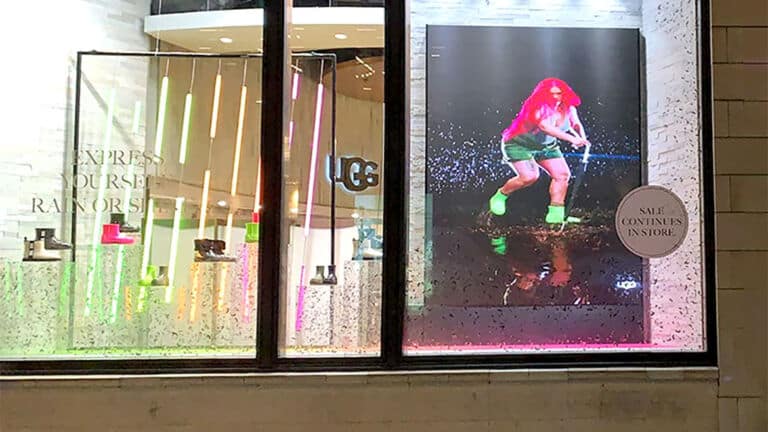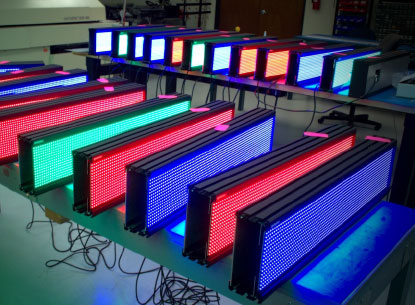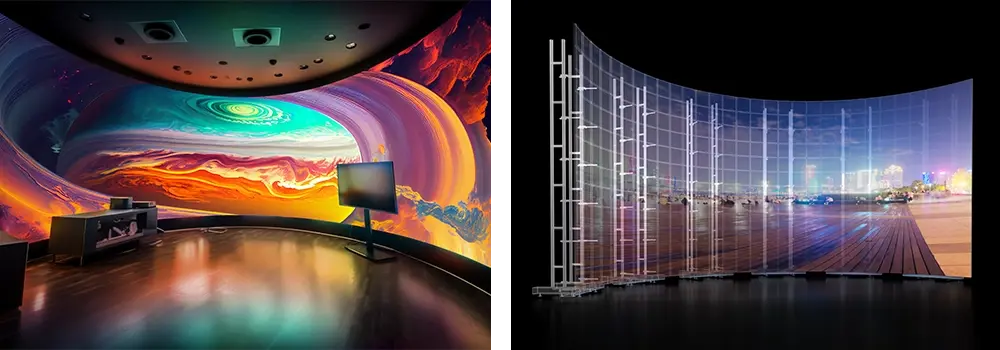Excellent Info On Deciding On Flexible Led Panels
Wiki Article
What Are The Top Things To Think About When Choosing An Led Display?
When considering LED displays, it is crucial to consider the resolution and pixel pitch. Both of these factors directly affect the clarity, detail and overall experience delivered by the display. The reason they matter in the first place:
1. Image Quality
Pixel Pitch - The pixel pitch is the distance between the LED's center and its neighboring pixel. A lower pixel-pitch indicates that the LEDs will be closer together. This leads to more pixel density, as well as higher resolution. This results in clearer, more detailed images.
Resolution: This refers to the total number of pixels displayed, usually measured in hight x width (e.g. 1080 x 1920). A higher resolution permits more detail to be displayed and provides a more immersive experience. This is especially important when you have large screens where the user is near the screen.
2. Viewing Distance
Pixel pitch is directly related to the optimal distance for viewing. In displays that can be seen from a distance, such as those in retail or exhibitions and indoor screens, a smaller pixel pitch is required to prevent pixelation. If the display is seen at a distance sufficient it will not matter whether there are more pixels.
3. Content Versatility
Displays that have a smaller pixel pitch and higher resolution are able to handle a greater variety of types of content including high-definition video to intricate graphics and small text. This versatility is crucial for applications that need high-quality content, like digital signage, broadcast studios, or control rooms.
4. Cost-related consequences
While a smaller size offers superior quality images, it also increases the cost of the display. Screens with higher resolution are more expensive to make due to the greater number of LEDs required. In order to achieve the perfect balance between budget and high resolution, you should consider your requirements as well as your distance of the screen to be viewed.
5. Application Specificity
The importance of resolution and pixels is contingent on the specific application.
Indoor Displays require a smaller Pixel spacing (e.g. between 1.2mm up to 2.5mm), to ensure high quality at close-up viewing distances.
Outdoor displays may have higher pixels pitches (e.g. from 4mm to up to 10mm), as they may be viewed more distantly, making high resolution less important.
6. The durability and upgradability
The pixel pitch is decreasing as display technology advances. This permits greater resolution and smaller sizes. If you invest in a display today with an ideal pixel pitch it will remain efficient and relevant for an extended period of time.
Conclusion:
Pixel pitch is a crucial factor in an LED display’s performance. It affects the quality of images, the viewing experience, as well as content versatility. To choose the best LED display that fits your application budget, size, and audience, you should carefully look at all of these variables. See the most popular cob led display for website examples including led wall, outdoor led monitor, led display rental, rental led display screen, led wall, led display rental, led screen panels, led the wall, led rental screen, translucent led screen and more.

When Selecting An Led Display, How Important Is It To Consider The Refresh Rate?
What is the importance of Refresh Rate in the research of LED displays?The refresh rate is a key aspect to be considered when evaluating LED displays, particularly in the event that the display is used to display dynamic media such as live broadcasts, video, or interactive applications. The refresh rate is essential for a number of reasons.
1. Image Smoothness and Clarity
Definition: Refresh rate is the number (measured by Hertz or Hz) of times per second that a screen changes its image. A higher rate of refresh results in smoother motion and less flickering.
Important High-refresh rate (3,840 Hz and above) is crucial for displays that show videos, animations, or pictures that move fast. This ensures the motion is smooth and doesn't stutter or tears. This is of particular importance for concerts halls, sports arenas and digital signage that enhance the viewing experience.
2. Flicker-Free Performance
Flicker: Displays with lower refresh rates may cause noticeable flickering, particularly when viewed through a camera or in slow-motion footage. Flickering displays can lead to fatigue and strain on the eyes. This makes them less comfortable for prolonged viewing.
Application: When the display is going to be recorded or recorded, for example in broadcasting studios, or at events, a faster refresh rate can reduce flickering, and will ensure that the video or image can be captured without artifacts.
3. Visual Quality in Various Lighting Situations
Impact on brightness. Higher refresh rates can have an effect on the performance of displays when lighting conditions vary. In bright environments, for example the higher refresh rate can help maintain image quality, consistency and avoid any visible flickering that could detract the display's efficacy.
Application: This is especially applicable to outdoor displays, stage events, and other situations where lighting conditions change frequently or are difficult to control.
4. Content Compatibility
Synchronization. It is essential to sync the refresh rate with the source material. This could be a live broadcast, video player or cameras. If the display's refresh rate is not in line with the frame rate of content, it can cause blurred or unmatched frames which can negatively affect the viewing experience.
Application Content from multiple sources in professional environments such as TV studios and large-scale venues for events making sure that the refresh rates are matched to the content frame rates is vital for a smooth playback.
5. The enhanced viewing experience
Motion Handling: High-refresh rates can handle rapid-moving content, which reduces motion blur and providing a clearer, more detailed image. This is a fantastic feature for sports broadcasting and gaming, as well as any other activity that requires a fast-paced pace.
Application: For venues that feature sports, gaming events or other action-packed content, a high refresh rate will ensure that the audience experiences each detail in a clear and vivid manner.
6. Reduced Eye Strain
Comfort: Low refresh rates can result in eye strain when watching for long period of time, particularly when people are near the screen or when content is being viewed over a long period.
Application: A high refresh rate is beneficial in retail environments, office spaces, and other public spaces in which people will be watching displays for long durations of time. It provides an experience that is more enjoyable.
7. Performance in Staging and Rental Staging Applications
Flexibility: LED displays used for rental or staging are often used in different settings and with various types of content. A high rate of refresh will guarantee that they can be adjusted to any occasion.
Application: In these situations where the display has to adapt to different content types and audience needs High refresh rates can be used to ensure reliability and flexibility.
Conclusion:
The rate of refresh is an important aspect of LED displays. They directly affect the user's comfort, flexibility and quality of the display. This is crucial for applications that have active content, live events, and in areas where the display will be used for an extended duration of time. When you are researching LED displays, it is important to focus on a high-refresh rate to ensure an unflinching display that enhances the experience of viewing for users and is in line with the specific needs of your customers. View the recommended led rental screen for website examples including display led outdoor, transparent led panel, outdoor led display screen, outdoor digital screens, led board rental, advertising tvs, flexible led screen display, display screen led, transparent led panel, led screen display and more.

How Important Is Content Management System (Cms) And Compatibility When Investigating Led Displays?
Content Management System (CMS) and compatibility are essential factors to consider when researching LED displays, especially in applications that require content to be updated frequently or controlled across multiple locations, or incorporated with other digital systems. CMS and compatibility are crucial due to a variety of reasons.
1. Easy Content Management
CMS Functionality - A robust CMS allows users to manage, design and schedule content for your LED display. It has a user-friendly platform to upload content and organize playlists. You can also plan display times.
Importance: For businesses that require updates to their content regularly, such as retail stores advertising networks, retail stores, or even event venues A robust CMS simplifies the process, cutting down the time and effort to manage display displays.
2. Remote Control and Flexibility
Remote Management: A good CMS enables remote management of displays, which allows updates to be made from any location. This is very important when you have multiple displays across different websites.
Remote management tools can be employed in situations where digital signage networks are deployed across different locations.
3. Scheduling Automation
Content Scheduling - A CMS which includes scheduling capabilities can help you plan your content in advance to ensure that the appropriate messages are displayed at the appropriate times. This allows you to focus on specific audiences at specific times or during certain occasions.
Automated updates of content saves time, and guarantees that the content is updated regularly. This is particularly useful for environments with high-speed internet, like hotels and airports.
CMS CMS is a fantastic tool for businesses managing content 24/7, such as broadcast news, transport hubs or large retailers. It comes with features like automatization and scheduling that help them run their business effectively.
4. Compatible with Existing Systems
Integration: The compatibility with the existing IT infrastructure media players, existing infrastructure, as well as software platforms is crucial to ensure seamless operation. CMS that is able to be integrated with various other systems and tools such as analytics tools, software for creating content CRM systems, or tools to manage customer relations adds value.
Compatible LED displays are ideal for areas that require digital signage to be integrated into other systems. This includes smart cities, retail spaces that incorporate customer data and corporate networks that are large.
5. Scalability
Future Expanding. A scalable CMS can grow to meet your needs, offering you the ability to easily add more displays, manage large content libraries, or even expand to new locations without requiring to completely overhaul your system.
Application: For companies planning to expand their operations, like hospitality chains, retail chains or multinational corporations a scalable CMS ensures that their digital signage infrastructure can grow with the business.
6. Content Variety, Support and Support
Content Types. The CMS should provide a wide selection of formats for content such as images, videos, text and interactive content. Being able to do this lets you produce content that is entertaining and adapted to the needs of your viewers.
Application: Multiple content types are supported in environments that require a broad range of content. This includes entertainment places, educational institutions, or advertising networks.
7. User Access Security
Role-Based Access: A CMS which offers role-based permissions allows various levels of access to be granted to various users. This is essential to ensure only authorized personnel have access to change critical content.
Security The security of a CMS with strong security is crucial to shield users from access that is not authorized. Unauthorized access could lead harmful or inappropriate information to be shown.
The role-based features and access control are crucial for organizations like universities, government entities and large companies with many users managing content.
8. Real-time Content Updates
Live Content Integration: The capacity to change content in real-time or incorporate live streams (such as news, social media or live coverage of events) is crucial in certain applications. This is especially important for events, live broadcasts or any other scenario where it is necessary to have timely content.
Application: In settings, like sports stadiums, broadcasting stations, or venues that host live events, the real-time update to content will ensure the audience has the latest information. This can increase the relevance and the impact of the display.
9. Reporting and Analytics
Performance Metrics: A great CMS will include reports and analytics that allow you to track the effectiveness of your content. Knowing the level of satisfaction with your viewers, ROI, and the quality of your content is crucial for the future optimization of your content and ensuring that your display's goals are met.
Applications include reporting and analytics capabilities. These are essential for companies who depend on data as a basis to make decisions. This includes advertisers, retailers, as well as public information systems.
Conclusion:
Successful LED display strategies require a powerful CMS that is compatible and strong. These systems allow for efficient managing content and seamless integration with existing system. They also provide scaling, flexibility and a range of applications. In your search for LED displays, consider the use of a CMS that meets the requirements of your organization, and offers an array of content types and offers robust security. Furthermore, it should offer tools to facilitate efficient delivery of content and performance tracking. These features will not only enhance the performance of LED displays, but increase the effectiveness and ROI on investment. View the most popular lightweight led screen for site recommendations including led board, led display rental, led display, led board, outdoor display led, led display, digital display, led panel transparent, outdoor screen led, led board and more.
